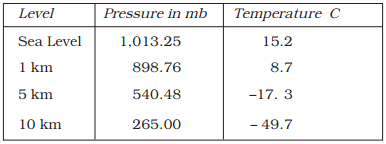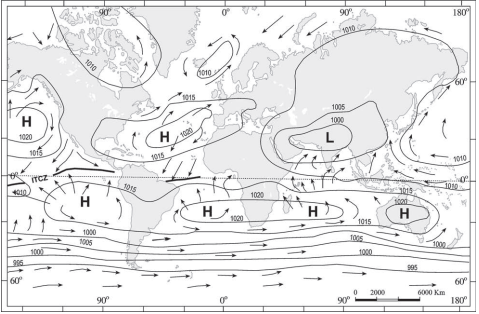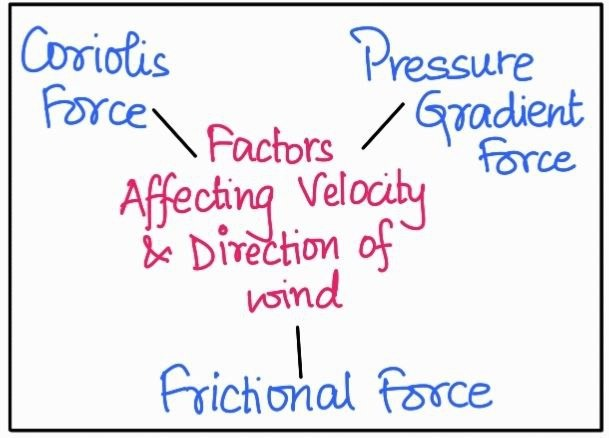![]() 30 Nov 2023
30 Nov 2023
Air expands when heated and gets compressed when cooled generating atmospheric pressure. This change in atmospheric pressure sets the air in horizontal motion called wind. This wind redistributes the heat and moisture across the planet, thereby, maintaining a constant temperature for the planet as a whole. The vertical rising of moist air cools it down to form the clouds and bring precipitation.
Atmospheric pressure is a crucial element in understanding weather systems, as it influences the movement of air masses and the formation of weather patterns.
Vertical Variation of Pressure: Atmospheric Pressure Changes

In the lower atmosphere, there is a swift decline in pressure as one goes higher.

Fig. . Isobars, pressure and wind systems in Northern Hemisphere

Distribution of pressure (in millibars) — January

Distribution of pressure (in millibars) — July
Forces Affecting the Velocity and Direction of Wind: Winds Unleashed: Atmospheric Pressure at Play
The horizontal winds near the earth’s surface are influenced by the combined effect of three forces: the pressure gradient force, the frictional force, and the Coriolis force.

<div class="new-fform">
</div>